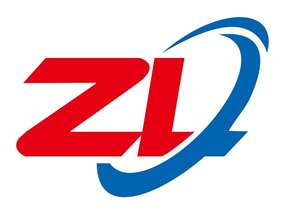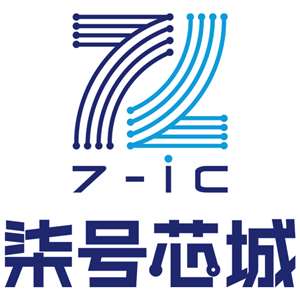OP37
OP37 are free of bias-current transients upon power up or power
down. However, it is always advantageous to control the speed
of power supply rise and fall, to eliminate transients.
offset of this circuit will be very low, 1.7 mV or less, for a 40 dB
gain. The typical output blocking capacitor can be eliminated in
such cases, but is desirable for higher gains to eliminate switching
transients.
In addition, the dc resistance of the head should be carefully
controlled, and preferably below 1 kΩ. For this configuration,
the bias-current induced offset voltage can be greater than the
170 pV maximum offset if the head resistance is not sufficiently
controlled.
C2
1800pF
R1
121ꢃ
R2
1100ꢃ
A simple, but effective, fixed-gain transformerless microphone
preamp (Figure 10) amplifies differential signals from low imped-
ance microphones by 50 dB, and has an input impedance of 2 kΩ.
Because of the high working gain of the circuit, an OP37 helps
to preserve bandwidth, which will be 110 kHz. As the OP37 is a
decompensated device (minimum stable gain of 5), a dummy
resistor, RP, may be necessary, if the microphone is to be
unplugged. Otherwise the 100% feedback from the open input
may cause the amplifier to oscillate.
A1
OUTPUT
T1*
OP27
150ꢃ
SOURCE
R3
100ꢃ
*T1 – JENSEN JE – 115K – E
JENSENTRANSFORMERS
10735 BURBANK BLVD.
N. HOLLYWOOD, CA 91601
Figure 11. TBD
C1
5ꢂF
R1
1kꢃ
R3
R6
Capacitor C2 and resistor R2 form a 2 µs time constant in this
circuit, as recommended for optimum transient response by
the transformer manufacturer. With C2 in use, A1 must have
unity-gain stability. For situations where the 2 µs time con-
stant is not necessary, C2 can be deleted, allowing the faster
OP37 to be employed.
316kꢃ
100ꢃ
–
LOW IMPEDANCE
MICROPHONE INPUT
(Z = 50ꢃTO 200ꢃ)
Rp
30kꢃ
R7
10kꢃ
OP37
OUTPUT
+
R2
R4
R3 R4
=
Some comment on noise is appropriate to understand the
capability of this circuit. A 150 Ω resistor and R1 and R2 gain
resistors connected to a noiseless amplifier will generate 220 nV
of noise in a 20 kHz bandwidth, or 73 dB below a 1 mV reference
level. Any practical amplifier can only approach this noise level;
it can never exceed it. With the OP27 and T1 specified, the
additional noise degradation will be close to 3.6 dB (or –69.5
referenced to 1 mV).
1kꢃ
316kꢃ
R1 R2
Figure 10. TBD
Common-mode input-noise rejection will depend upon the match
of the bridge-resistor ratios. Either close-tolerance (0.1%) types
should be used, or R4 should be trimmed for best CMRR. All
resistors should be metal-film types for best stability and low noise.
References
Noise performance of this circuit is limited more by the input
resistors R1 and R2 than by the op amp, as R1 and R2 each
generate a 4 nV√Hz noise, while the op amp generates a 3.2 nV√Hz
noise. The rms sum of these predominant noise sources will be
about 6 nV√Hz, equivalent to 0.9 µV in a 20 kHz noise bandwidth,
or nearly 61 dB below a l mV input signal. Measurements confirm
this predicted performance.
1. Lipshitz, S.P, “On RIAA Equalization Networks,” JAES, Vol. 27, June 1979,
p. 458-4S1.
2. Jung, W.G., IC Op Amp Cookbook, 2nd Ed., H.W. Sams and Company,
1980.
3. Jung, W.G., Audio /C Op Amp Applications, 2nd Ed., H.W. Sams and Com-
pany, 1978.
4. Jung, W.G., and Marsh, R.M., “Picking Capacitors.” Audio, February &
March, 1980.
5. Otala, M., “Feedback-Generated Phase Nonlinearity in Audio Amplifiers,”
London AES Convention, March 1980, preprint 197B.
6. Stout, D.F., and Kaufman, M., Handbook of Operational Amplifier Circuit
Design, New York, McGraw Hill, 1976.
For applications demanding appreciably lower noise, a high quality
microphone-transformer-coupled preamp (Figure 11) incorporates
the internally compensated. T1 is a JE-115K-E 150 Ω/15 kΩ
transformer which provides an optimum source resistance for
the OP27 device. The circuit has an overall gain of 40 dB, the
product of the transformer’s voltage setup and the op amp’s
voltage gain.
Gain may be trimmed to other levels, if desired, by adjusting R2
or R1. Because of the low offset voltage of the OP27, the output
–14–
REV. A



![]()
![]()

![]()

![]()
![]()

